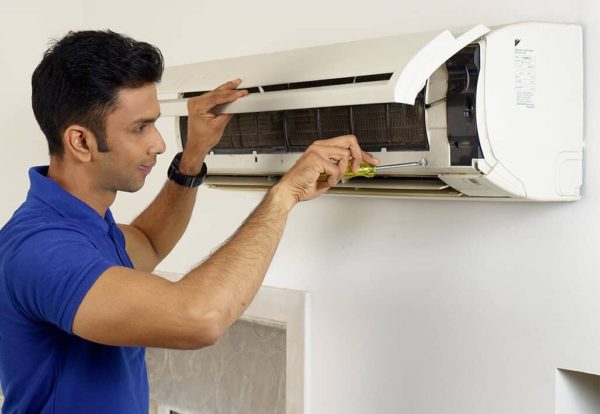IAQ Solutions
During these pandemic days, your air is far more likely to contain more hazardous particulates inside then outside that can make you and your family sick. If you don’t have a way to filter and kill these particulates that are harmful, you could be putting your health at risk. Indoor Air Quality ( IAQ) improvement can be done by various ways depends on application/ use of AC space.
The different methods are:
1) Filteration
2) Controlled & Modulated Ozone Injection System,
3) Photo Hydro Ionisation ( PHI),
4) Bipolar Ioniser
5) Electronic Air Cleaner / Electro Static Precipitators
6) UV Systems
UVGI Systems
UV lamps are basically used for germicidal irradiation. UV rays below 200 nm wavelength produce ozone, which should not be used since it produces ozone . UVC rays at 265 nm wavelength give the highest kill rate but with man made lamps, we could achieve the highest wavelength of 253.7nm. Hence these lamps are used for killing bacteria and viruses. Kill rate is a function of time and UV intensity. UV dose required for each bacteria/virus /pathogen is different hence UV systems are tailor made as per the requirement of the end user.
As per Isharae and Ashrae guidelines UV systems to be designed for UV dose of 4026 mW.S/ sq.cm.
UV can be used for surface disinfection ( installation near coil to keep coil clean, which may be source bacteria/viruses/ pathogens generation) and another is Air Disinfection ( to be installed in supply air by keeping very low air velocity. As the velocity is low, contact time of air molecule with UV will be more & we can achieve the desired results by using lower number of lamps).
UV system is recommended in AHUs, FCUs , CSUs of all places ( Work Station, OTs , Malls etc ).
Pros to the UV system
1) UV lighting has a 99% effective rate at killing mold and bacteria if the air passes through it slowly enough.
2) It can be energy saving by using the UV and filter systems to catch more dust making it run more efficiently and saves money on bills.
3) UV light kills airborne bacteria, mold, mildew etc.
4 ) UV disinfection reduces infectious airborne organisms to non harmful levels.
Cons to the UV system
1 ) Dust quickly builds up on the UV bulb so it needs to be cleaned to ensure its effectiveness and with UV light being harmful to humans, make sure the system is off before.
2) UV light does not filter air, it just kills off the particulates so you need to use filters still.
3 ) UV lamps are short lived and need to be replaced in 10000-12000 hours.
Electrostatic Air cleaner
Electrostatic Precipitators / Electronic Air Cleaners work on principle of charging the suspended air particles by creating high voltage passage at the beginning of filter & trapping these suspended particles by positive & negatively charged electrodes at the end of filter. Hence air coming out of filter gets cleaned. Normally these filter are installed near evaporator coils.
An electronic air cleaner removes contaminant particles from your air using static electricity. The device contains a pre-filter, ionizing wires, and a metal collector plate.
As air enters, it first passes through the pre-filter, which traps larger contaminant particles. The air then flows into the ionizing chamber, where the remaining contaminant particles receive an electric charge. Next, air flows to the collector plate, which has an opposite charge as the one given to the particles. These opposite charges cause the contaminant particles to stick to the collector plate.
This method allows electronic air cleaners to trap the tiny particles most HVAC air filters miss. Fiberglass and other air filters must have space between the fibbers to allow air to pass through, but these spaces also let contaminants through. An electronic air cleaner doesn’t rely on fibrous filter material, so it isn’t affected by this limitation.
Below are the ISHRAE/ASHRAE suggestion to upgradation of HVAC System & below is Honeywell IAQ Solutions options with attached details:
1) Fresh Air (ASHRAE Evidence Level A)
2) Filtration – MERV 13+ (ASHRAE Evidence Level A)
Honeywell solutions :
1) Filtration – MERV 14 EAC Filter @ 6 mm pressure drop i.e. lower than media pre filter (we don’t need pre media filter)
Pros
1) Electronic air cleaners can trap up to 99.7 percent of particles as small as 0.30 micron in size, making them as efficient as HEPA filters.
2) The air cleaner can be cleaned . Suspended particles are collected on the collecting plate and our models are dishwasher safe.
3) EAC do filter air and kills off the particulates.
4) EACs are long lived and has 8 to 12 years of durability.
5) Comprehensive Static loss is 6.5 mm Only much lesser comparing to fabric filetters of same grade.
Cons
1) The air cleaner requires maintenance to keep it efficient. A dirty collector plate impairs the device’s ability to trap particles. You’ll need to remove both the pre-filter and collector plate for washing. Most models are dishwasher safe.
2) They can’t capture gaseous contaminants such as volatile organic compounds (VOCs) that come from paint, new carpet and furniture, cleaning products, and many other common household items.

